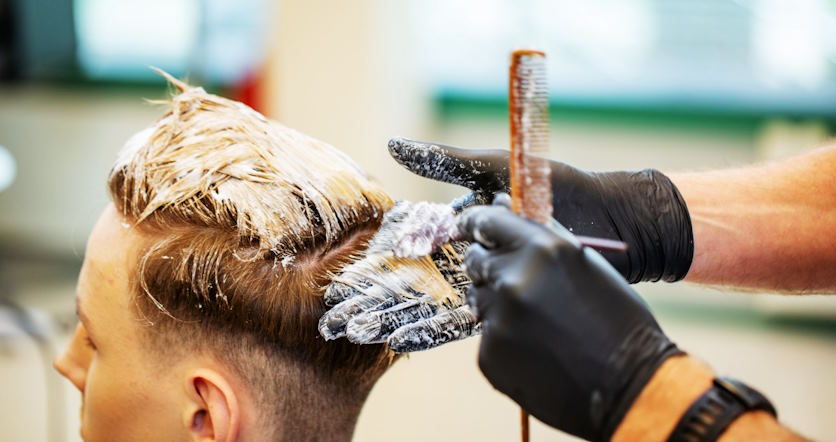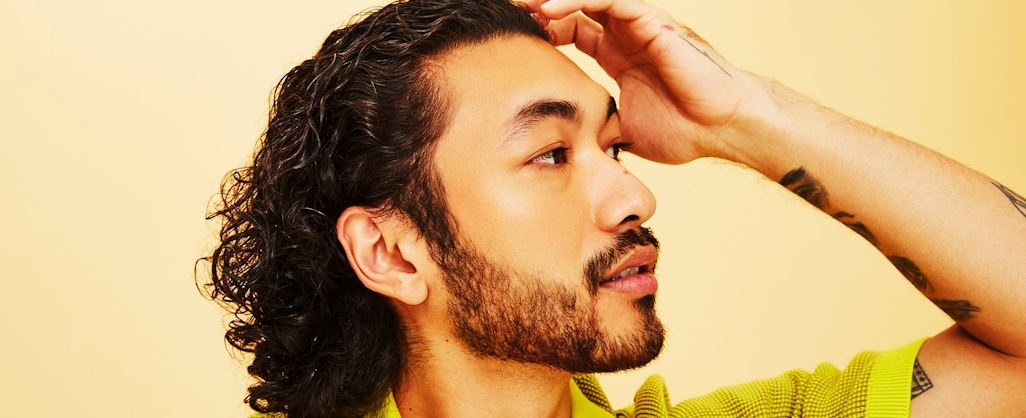Pros and Cons of Men’s Hair Dyeing Methods
As societal perceptions continue to evolve, so too does the landscape of men’s grooming practices. The emergence of hair dyes for men represents not only a cosmetic choice but also a symbolic assertion of individuality and autonomy. With an array of options available, ranging from temporary color sprays to professional salon treatments, men now have unprecedented freedom to experiment with their hair and explore new facets of their identity.
Temporary Hair Dye
Temporary hair dye offers a quick and easy way to experiment with different hair colors. It typically lasts for a few washes and comes in various forms such as sprays, gels, and mousses. One of the main advantages of temporary hair dye is its flexibility; individuals can change their hair color frequently without long-term commitment. However, the color may fade quickly, especially with frequent washing, and may not provide complete coverage for gray hairs.
Semi-Permanent Hair Dye
Semi-permanent hair dye contains smaller molecules that penetrate the hair shaft partially. This results in a longer-lasting color compared to temporary dyes, typically lasting up to 6-8 weeks. Semi-permanent dyes are available in a wide range of shades and provide more coverage for gray hairs. However, they may still fade over time and require regular touch-ups to maintain vibrancy.

Permanent Hair Dye
Permanent hair dye involves a chemical process that permanently alters the hair’s color. It provides the most long-lasting results, with color staying until new hair grows in. Permanent dyes offer complete coverage for gray hairs and come in a vast array of shades. However, the process can be damaging to the hair, especially if not done correctly, and may require frequent root touch-ups to maintain consistency.
Natural Hair Dye Alternatives
For those seeking a more organic approach, natural hair dye alternatives offer a gentler option. Ingredients such as henna, indigo, and herbal extracts are used to dye the hair without harsh chemicals. Natural dyes provide a safer alternative for individuals with sensitive skin or allergies. However, they may not offer as wide a range of colors as synthetic dyes and may require more frequent application to achieve desired results.
Professional Salon Dyeing
Professional salon dyeing offers expert precision and customization. Trained stylists can assess hair type and desired outcome to create a personalized color formula. Salon treatments often yield professional-quality results with minimal risk of mistakes. However, salon services can be costly and time-consuming, requiring regular appointments for maintenance.
At-Home Hair Dye Kits
At-home hair dye kits provide convenience and affordability for those who prefer to dye their hair themselves. These kits come with everything needed to color hair at home, including dye, developer, and instructions. At-home dyeing allows for flexibility in scheduling and can save money compared to salon visits. However, it requires careful application to avoid mistakes, and results may vary depending on individual skill level.

Health Concerns and Risks
While hair dyeing can enhance appearance, it also poses potential health risks. Some common side effects include scalp irritation, allergic reactions, and hair damage. It’s essential to follow safety precautions when dyeing hair, such as conducting patch tests and using protective gloves. Individuals with pre-existing scalp conditions or allergies should consult a dermatologist before dyeing their hair.
Cost Analysis
The cost of hair dyeing varies depending on the method chosen. Salon treatments tend to be the most expensive option, while at-home kits offer a more budget-friendly alternative. Additionally, ongoing maintenance and touch-ups should be factored into the overall cost of hair dyeing. Individuals should weigh the upfront expenses against long-term investments in their desired look.
Maintenance and Upkeep
Maintaining dyed hair requires regular care and attention. Using color-safe shampoo and conditioner can help prolong the vibrancy of the color and prevent premature fading. Additionally, minimizing heat styling and exposure to harsh chemicals can help preserve the health of dyed hair. Regular touch-ups may be necessary to cover roots and maintain consistent color.
Social Perception and Stigma
Despite the growing acceptance of men dyeing their hair, societal attitudes towards hair color still vary. Some may perceive dyed hair as fashionable and trendy, while others may view it as unnatural or unprofessional. However, attitudes are gradually shifting, with more individuals embracing hair dyeing as a form of self-expression and creativity.

